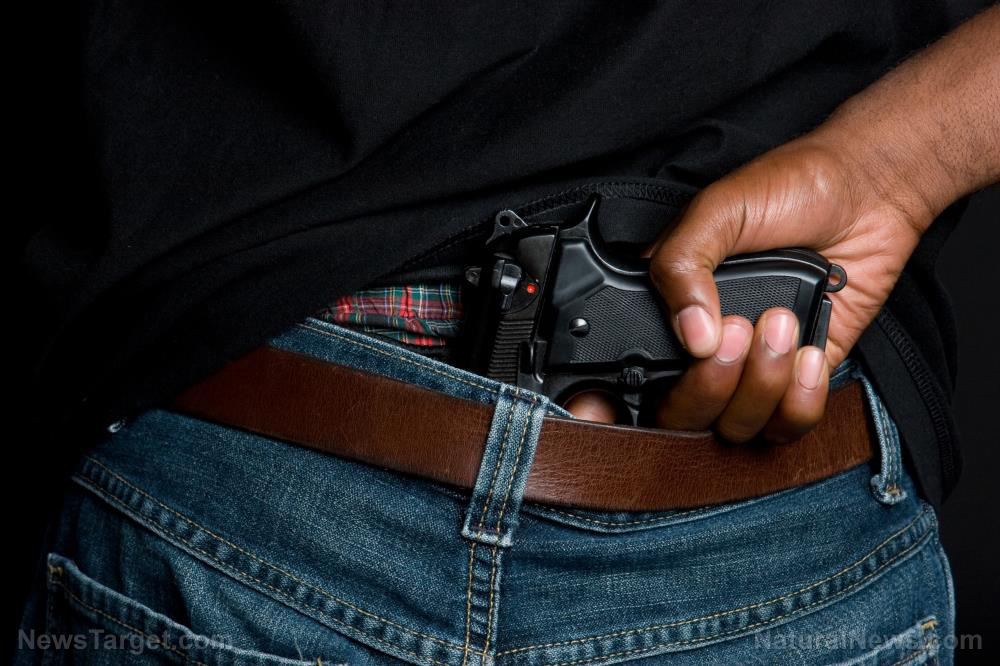Firearms training: Invest time and resources to develop your shooting skills and accuracy
08/21/2019 / By Edsel Cook

It isn’t enough to own a gun and put in some time at the firing range. Preppers who are serious about defending themselves with firearms must develop a training plan for honing their shooting skills.
Like any plan, it starts with an honest self-assessment. A person needs to determine his current level of skill in handling guns.
Preppers with poor safety skills must get rid of those problems through proper training and diligent practice. Meanwhile, individuals with sufficient gun handling and shooting skills may start expanding their knowledge base and learning new tricks.
Look for training classes with a segment that tackles the principles of shooting. The course must also include lots of live-fire drills.
The first step for preppers planning for concealed carry is attending classes on the appropriate methods and skills. Students will learn all evolutions on the firing line from concealment. Look for instructors that set high bars on par time and accuracy.
Attend the classes in typical daily attire. Bring the everyday carry (EDC) gun and holster to every training session.
In addition to the concealed carry shooting classes, preppers may also consider taking up training for intermediate and advanced skills with handguns. These skills include shooting while moving, shooting from compromised positions, and shooting at moving targets.
Again, concealed carry self-defense shooters must learn and practice these skills with concealed weapons. (Related: Fit and ready: Self-defense tips for preppers.)
Train to intelligently act instead of reflexively react
Next comes scenario-based training on moving through structures, shooting inside them, and shooting in and around vehicles. Most civilians spend most of their time in doorways, stairwells, and other spaces leading in or out of a building or structure.
Sponsored solution from the Health Ranger Store: Lab-verified Nascent Iodine solution is a dietary supplement that provides your body with supplemental iodine to help protect your thyroid during radiation exposure. Nuclear accidents such as Fukushima (or nuclear war) can expose your body to radioactive iodine-131, a dangerous radioisotope. Pre-loading your system with stable iodine occupies the iodine receptor sites on your organs, causing your body to naturally expel radioactive iodine you may have been exposed to through air, food, water or milk products. This defensive strategy is recommended by nearly all health authorities, worldwide, including the Nuclear Regulatory Commission. Discover more at this link.
People are most vulnerable in such transitional areas. They need to know how to protect themselves while moving through those spaces.
After improving these skills, start focusing on target discrimination. A potential threat may not turn out to be a threat in the end.
Avoid developing a mentality that always fires at a target once the gun comes out of concealment. Shooting a person who is not a real threat has serious consequences.
Instead, spot potential threats as early as possible. Study their posture and whatever it is the person is holding. Use the observations to determine if the person is a threat or not.
Test your self-defense shooting skills in Force-on-Force training sessions
Finally, once a prepper has reached a high level of skill at handling and firing concealed carry, look for Force-on-Force training events. These sessions will test the newly acquired skills against other people.
In this type of training, other students or adjunct instructors serve as a trainee’s opponents in various scenarios based on real-life events. Sessions range from drills and sparring evolution to open-ended situations with several ways of conclusion.
Note that a single Force-on-Force training session costs a lot of money. It also requires an experienced trainer who knows how to make it as realistic as possible.
In return, a properly executed session provides realistic levels of stress, physical exertion, and a thinking opponent that reacts to the student’s every action. It is the next best thing to a real-life fight and is much safer.
Force-on-Force training sessions put together every skill and knowledge a prepper has learned. It will also reveal any weakness in the student’s abilities.
A session may use simulator guns, knives, blunt weapons, or unarmed combat. It will also require safety gear while intensity levels may vary from half to full power.
To summarize, owning a gun or casual shooting is nowhere good enough for serious self-defense. A prepper must prepare for the worst by planning and training accordingly.
Sources include:
Tagged Under: armed self-defense, concealed carry, EDC gun, firearms, force-on-force training, guns, handguns, preparedness, prepper, prepping, self-defense, self-defense shooting, shooting practice, shooting skills, shooting training, survival, survival skills, weapons
RECENT NEWS & ARTICLES
COPYRIGHT © 2017 · SURVIVAL NEWS



















